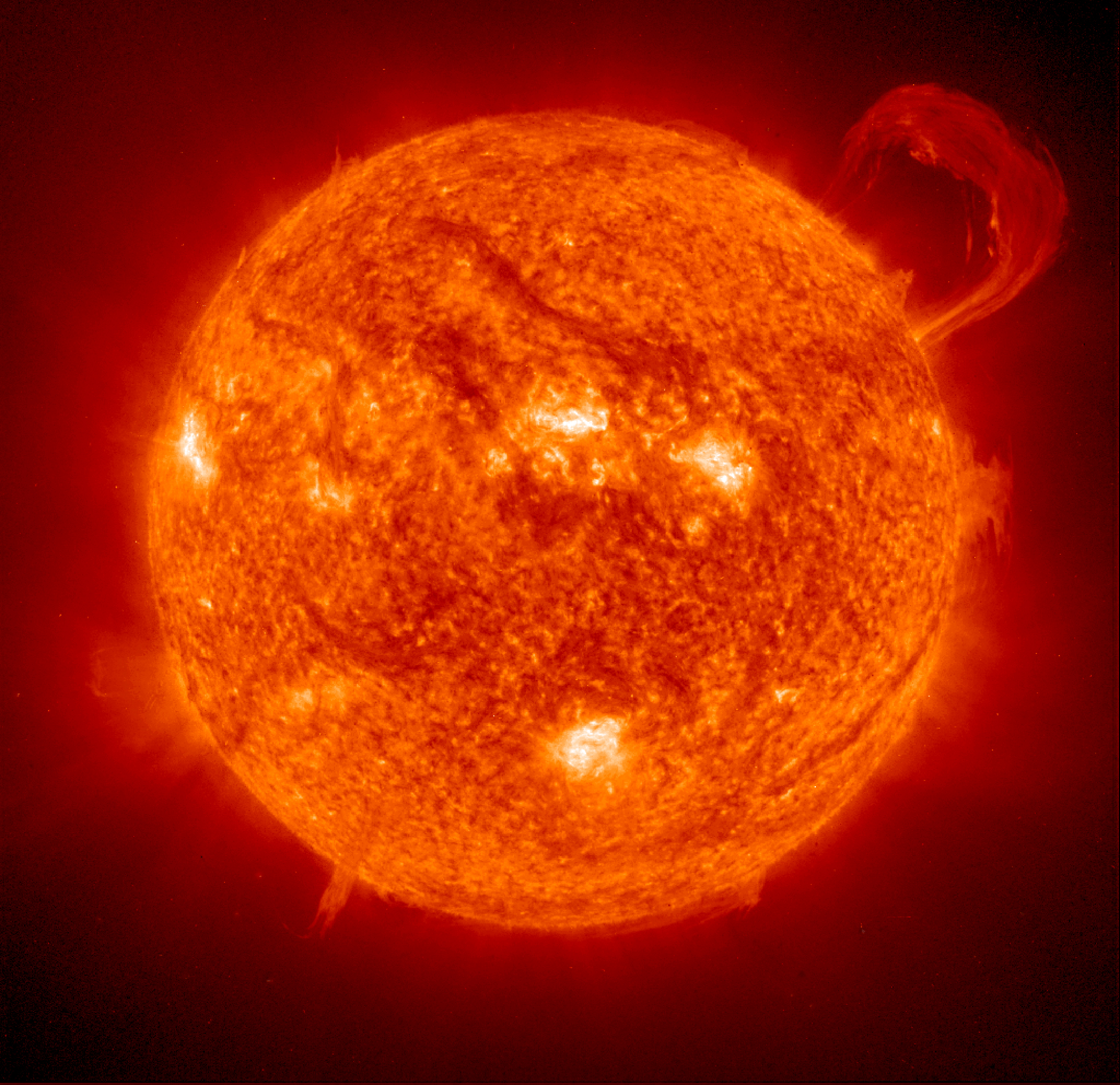The Sun Is Going Into an Extra Deep Solar Minimum
The Sun in extreme ultraviolet
Image Credit: Wikimedia Commons/NASA, ESA
This post is just a short blurb to pass on some information from the website Spaceweather.com. If you have been keeping track of solar activity, you know the Sun is going toward a solar minimum sometime around 2020. What you may not know is the crest of the sun spot number at each solar maxima has been declining in recent decades. Concerning solar activity today (8/30/2018), Spaceweather.com writes,
SOLAR MINIMUM CONDITIONS ARE IN EFFECT: The sun is spotless again. For the 133rd day this year, the face of the sun is blank.To find a year with fewer sunspots, you have to go back to 2009 when the sun was experiencing the deepest solar minimum in a century. Solar minimum has returned, bringing extra cosmic rays, long-lasting holes in the sun’s atmosphere, and strangely pink auroras. Free: Aurora Alerts.
A plot of sunspot numbers produced by NASA demonstrates the decline in solar power output since 1990.

NASA / Hathaway
Sunspots are areas of cooler, albeit immensely hot, plasma. They are part of a mechanism by which the Sun cools itself, and they become more numerous as the Sun’s power output increases. In the plot above, you can see an oscillation in sunspot numbers that correlates with the well-known eleven year solar cycle. The fact that sunspot number peaks have been falling since sometime after 1990 demonstrates solar power output at the maxima has been falling. This means the solar power irradiating the Earth, averaged over the solar cycles, is falling.
However, the declining incident solar power is slight enough that it does not greatly affect planetary temperatures directly. Instead, its indirect effects are much greater. The larger the solar power output, the larger the intensity of the solar wind becomes. The solar wind is a stream of charged particles ejected from the Sun’s upper atmosphere, its corona. One well-known consequence of the solar wind is that it blows away cosmic rays from the inner solar system. Cosmic rays are streams of charged particles originating outside the solar system, which are generally much more energetic than solar wind particles, albeit much less dense.
Because they are much more energetic than solar wind particles, cosmic ray particles can penetrate deeper into our atmosphere and cause many more ionizations of atmospheric particulates.

Universe Today / Simon Swordy (U. Chicago), NASA.
Each ionization of an atmospheric particulate provides a nucleation center to attract water molecules. A large number of these then form cumulus clouds in the troposphere. Clouds act as Earth’s umbrella against solar radiation, reflecting that radiation back into space before it is significantly absorbed.
What the sunspot number plot is telling us is the solar wind intensity has been decreasing on average since sometime in the 1990s. That means increasing exposure of the atmosphere to cosmic rays. In turn, that implies increased cloud cover producing a cooling effect on the atmosphere. That cooling effect has been enough to pretty much cancel the warming of the Dansgaard-Oeschger cycles, as demonstrated by the NCDC plot of globally averaged temperature anomalies below.

Image Credit: National Climatic Data Center
As you can see from the plot, we have been in a “warming pause” since sometime in the 1990s. We are now in the warming phase of the Dansgaard-Oeschger cycles, which should last until sometime in the period 2400-2500. The previous cooling phase was the Little Ice Age from around 1300 to the mid-1800s, and the warming phase prior to that was the Medieval Warm Period from around 950 to 1250.
This is a phenomenon discussed in somewhat greater detail in my post Solar Wind, Cosmic Rays and Clouds: The Determinants of Global Warming. That it and the Dansgaard-Oeschger cycles are much more important as causes of global warming than human emissions of CO2 was shown in the following posts.
- The Complexity of Atmospheric Physics
- Thermodynamic Interactions of the Oceans With the Atmosphere
- Thermodynamic Effects of Atmospheric Carbon Dioxide Revisited
If you are really interested in this controversy, you might also find the following posts interesting.
- What Consensus on Anthropogenic Global Warming?
- CO2 Levels In Air Dangerously Low for Life on Earth
- Anti-AGW Global Warming Scholarly References
- The Great Global Warming Scam
Views: 2,898






























